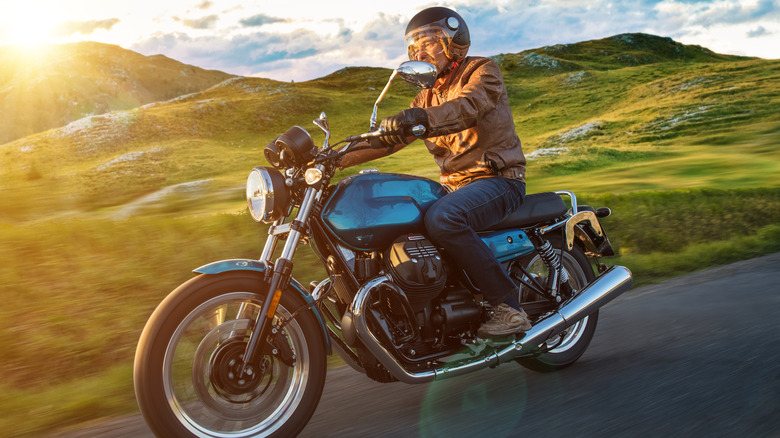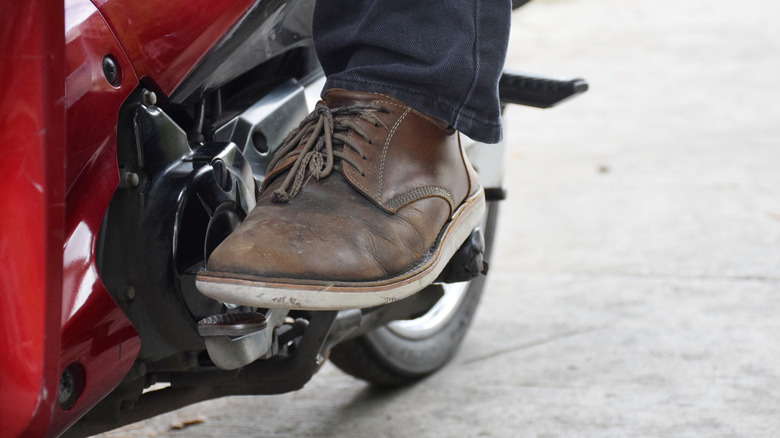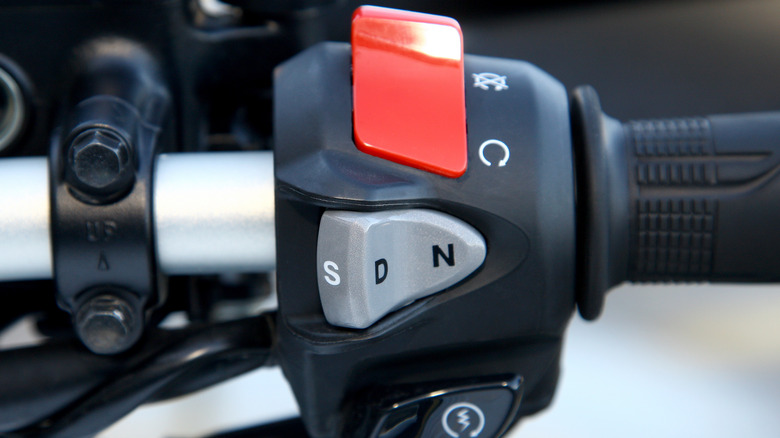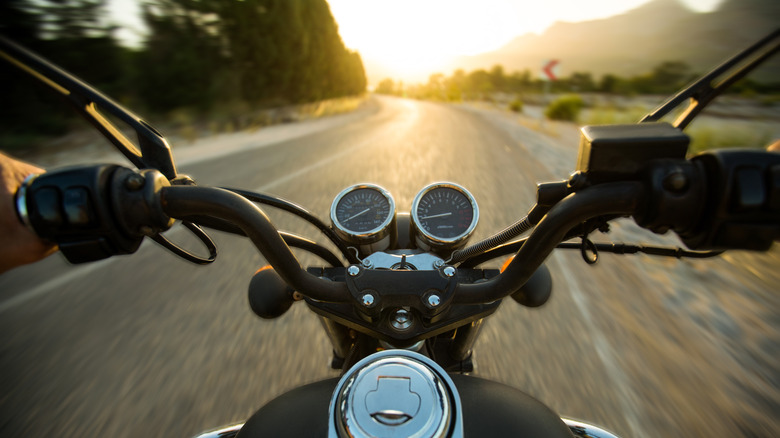Manual Vs. Automatic: Which Motorcycle Transmission Is Right For You?
Few modes of transportation have ever been quite as romanticized, if not outright fetishized, as the motorcycle. As films, books, and other forms of entertainment continue to fuel the fires of easy-riding freedom in generations young and old, demand for motorcycles has arguably never been higher.
If you count yourself among the crew of prospective buyers who have never saddled up on a bike of any make or model, you're bound to have a laundry list of questions that need answering before making your purchase. And at the top of that list will no doubt be whether you should hit the open road astride a bike with a manual or automatic transmission.
Answering that all-important question may prove trickier than you know since the choice between manual and automatic transmission will dramatically impact your ride. It will also directly affect how much money you spend on your shiny new motorcycle. Here are a few factors to consider when deciding between a manual or automatic motorcycle transmission.
What is a manual transmission?
Before you make that decision, it's imperative to know the difference between manual transmission and automatic, as the choice can offer a night and day driving experience. Like in a car, most manual motorcycle transmissions offer a five-speed gearbox that requires the operator to physically switch between gears to control a vehicle's speed and acceleration.
A manual transmission on a motorcycle is also similar to an automobile in that it requires the user to switch gears using a clutch and a gear shifter. However, the general setup of most motorcycles means those devices are not quite as user-friendly in terms of location. You'll still need to operate them in tandem with your hand and your foot, but on a motorcycle, the clutch is typically located on the handlebar. As for the gear shift, it's operated by foot, which will be located near the bike's left foot pedal.
That setup will likely require a period of adjustment for new riders. That tricky adjustment may be more than some motorcycle neophytes want to take on. As most motorcycles operate with a manual transmission, you'll want to give the potential learning curve some serious thought before you buy anything.
What are the pros and cons of a manual transmission?
Adjustment period aside, there are a few good reasons to consider purchasing a motorcycle with a manual transmission. First and foremost, you should know bikes with a manual transmission are typically priced lower than those with an automatic. That's because the latter tend to cost more to manufacture.
It's widely understood that manual transmissions generally use less gas than automatic, meaning you may save a few bucks once you perfect the fine art of shifting gears. And if you're looking to feed your need for speed with a motorcycle, a manual transmission means that acceleration depends entirely on the capability of you and your bike.
On the "cons" side of the equation, it will probably take most riders a little more time to get comfortable using a manual transmission than an automatic one, so it may be a while before you are properly licensed and safe to hit the open road. And even when you do get comfortable shifting gears, it may not be much fun for you to do so while navigating traffic. Perhaps most importantly, bikes with a manual transmission generally earn less on resale than automatic ones.
What is an automatic transmission?
Now, if you're wondering what an automatic transmission on a motorcycle is, you should know the name is relatively self-explanatory. And yes, "automatic" means once the drive mode is selected from a handlebar-mounted shifter, the engine cycles through gears as needed without any further fuss from the bike's operator.
Ease of use aside, automatic functionality requires that a few more moving parts are built into the transmission than with a manual. At the heart of the automatic transmission is the planetary gear set, which is responsible for creating different gear ratios. With the help of automatic transmission fluid, a torque converter attached to the drive train essentially acts as the vehicle's clutch, facilitating the shifting of gears on the move with no effort from the bike operator.
Of course, newer bikes boasting automatic transmission are a little more intricate, with most leaving all the gear-shifting in the hands of an integrated computer. They also come equipped with a computer-operated Dual Clutch System, which increases a bike's efficiency. And with that level of automated functionality, a bike owner will never need to worry about stalling out on the road.
What are the pros and cons of an automatic transmission?
For most prospective motorcycle buyers, that last fact likely ranks pretty high on the "pros" list of reasons to consider a vehicle with an automatic transmission. Since you won't need to learn how to manage shifting gears while in motion, it will be easier to learn how to ride an automatic bike.
In turn, it will also be easier for you to get your motorcycle license as fewer driving lessons are required. With automated downshifting, it's easy enough to argue motorcycles with an automatic transmission are safer to ride than those with a manual one. And all of those factors make automatic transmissions a preferable option to anyone regularly staring down stop-and-go traffic.
Now for some bad news, which includes a reminder that bikes with automatic transmissions require more parts and technology than those equipped with manual ones, meaning they tend to be more expensive. That also means automatic bikes generally cost more to fix. Those fancy bells and whistles make automatic bikes heavier than their counterparts, making them harder to move and control. Coupled with that automatic shifting, that extra weight means you'll probably spend a little more at the gas pump, too.
Which transmission is right for you?
Now that you know the difference between manual and automatic motorcycle transmissions, deciding which better suits your needs should be a breeze. And that decision will be as personal as any you'll ever make in the automotive arena.
For most potential buyers, price will likely top the list of concerns when looking at a motorcycle with automatic or manual transmission. If cost is the primary worry, then manual is the way to go. The same holds if you're merely itching to open the throttle and see how fast your motorcycle can get you where you need to go. But for motorcycle enthusiasts prioritizing ease of use and safety on the road, an automatic transmission may be the wiser play — even if it does set them back a few more bucks.
At the risk of overcomplicating the debate, we'd also be remiss if we didn't mention that buyers on the automatic transmission side of the argument may also want to consider investing in a quieter, more energy-efficient electric motorcycle. Options are understandably a little more limited on the EV front, but it still might be nice for some to leave gasoline out of the equation when they head out on the highway.





